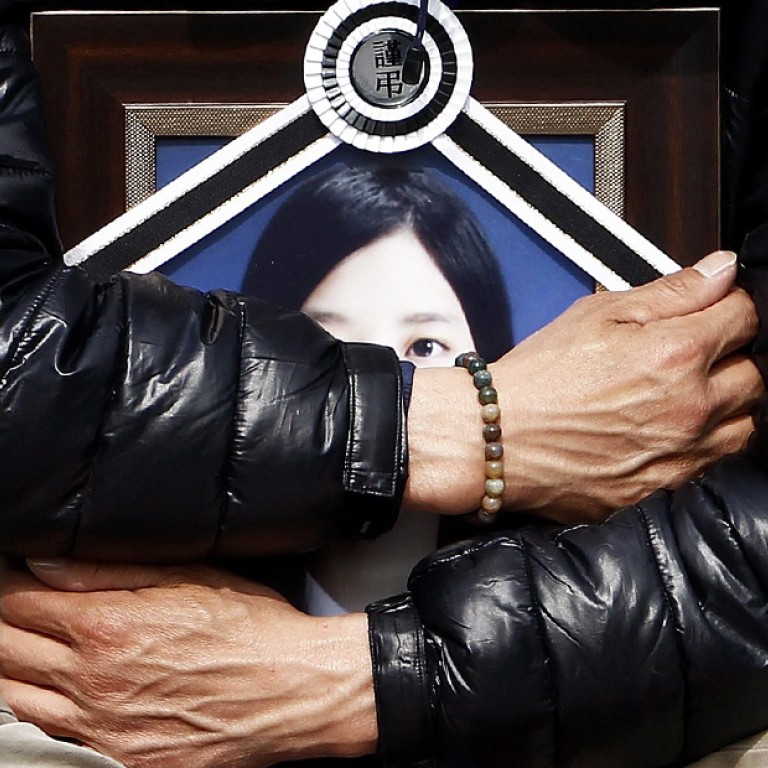
South Korean diver's harrowing diary of grim search for bodies inside Sewol
“Started search and touched a wall. Groped along the wall ... moved along further. Felt a body.”
“Started search and touched a wall. Groped along the wall ... moved along further. Felt a body.”
It’s a grim diary entry for a harrowing job – the recovery of hundreds of bodies, most of them schoolchildren, from the cold, dark interior of the submerged South Korean ferry Sewol that sank more than three weeks ago.
A diver who worked on the rescue and recovery operation for nearly all that time kept a journal that outlines, in stark detail, the physical and psychological demands placed on the teams, which also suffered a fatality during the search.
It follows the progression of the operation, from the early optimism that some passengers might be found in air pockets, to the tragic realisation that there were no survivors beyond the 172 who escaped before the ship fully capsized. “My mind is totally occupied by one thought – find anyone still alive,” the journal begins on April 19, three days after the 6,825-tonne Sewol went down.
Of the 476 on board, 325 were children from the same high school, on an organised trip to the southern resort island of Jeju.
The diver was hired by a salvage company on a temporary contract that forbade him to speak to the media. But his journal entries were published under the pseudonym “Mr B” by Kookje Shinmun, a newspaper in the southern city of Busan.
By April 22, the reality had sunk in that the search for survivors had become a search for bodies, even as relatives clung to the thinnest of hopes.
“What have we done to these children?” the entry reads. “Sorry, Sorry, Sorry.” A parent’s thanks for retrieving his child’s body does little to lift the sense of helplessness. “I don’t think I deserve this gratitude,” he writes.
The most searing entries are the most recent, recorded as dive teams moved deeper into ferry. The divers were under immense pressure to retrieve all the bodies as quickly as possible, but faced working in near zero visibility.
“The torch is almost useless,” notes a May 4 entry. “The visibility is so bad, it’s better to just close your eyes and grope with your hands.”
On May 6, the journal describes discovering a body, bumping into something which touch reveals to be an arm belonging to a corpse. After securing the body, the diver signal to the surface team to pull them up: “I get through the doorway and gently guide the body through after me, and then we start rising again.”
